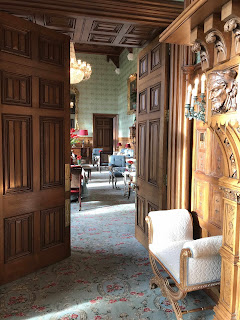The Ring of Kerry is one of Ireland’s most famous, and picturesque, scenic drives. It’s a circular route around the Iveragh Peninsula in southwest Ireland’s County Kerry. The route is more than 179km and takes in rugged and verdant coastal landscapes and rural seaside villages. We were lucky enough to complete the circuit on a day largely filled with blue skies and sunshine.
Our first stop was Ross Castle on outskirts of Killarney. The castle was closed for winter but its lakeside location was still ideal for a scenic walk. From there we went on to the Gap of Dunloe. We were able to drive deep into this scenic valley without incident. The road is incredibly narrow, with very limited passing options. It’s definitely not a place to drive in Summer when the crowds are out in force.
The views are genuinely breath-taking and simply become better and better as you venture further into the valley. Around every corner is another stunning Instagram worth scene. We gave ourselves plenty of time to enjoy this genuinely beautiful piece of Ireland before venturing on to Rossbeigh beach.
Our next highlight was Cahergall Fort. This restored, ancient stone structure looks rather uninspiring from the road. However, once inside the complex is truly remarkable. A series of internal steps gave us access onto the rim of its broad stone walls. The view atop the wall was magnificent. It spread out across the fields and on to the nearby coast. The day we visited; we were lucky enough to experience the fort alone for almost half an hour.
We then stopped briefly at Waterville. This seaside village was once a favourite Summer haunt for Charlie Chaplin. He remains immortalised by a life-size bronze statue on the waterfront. It then on to Com An Chiste Lookout. Here we stopped to admire a stunning view across the southern coast of Ireland.
We then stopped briefly at Waterville. This seaside village was once a favourite Summer haunt for Charlie Chaplin. He remains immortalised by a life-size bronze statue on the waterfront. It then on to Com An Chiste Lookout. Here we stopped to admire a stunning view across the southern coast of Ireland.
We finished our final day in Ireland with a visit to Blarney Castle, home of the famous Blarney Stone. We had the entire castle almost to ourselves. We later realised how lucky we were after seeing queue signs outside advising visitors of a two-hour wait time. The castle is clearly more popular in Summer.
I can proudly say I’ve now kissed the Blarney Stone. It’s said that all who do so are granted a gift of the gab (that is great eloquence and skilful flattery). Bill Clinton once did the same thing, so I count myself in good company.































































